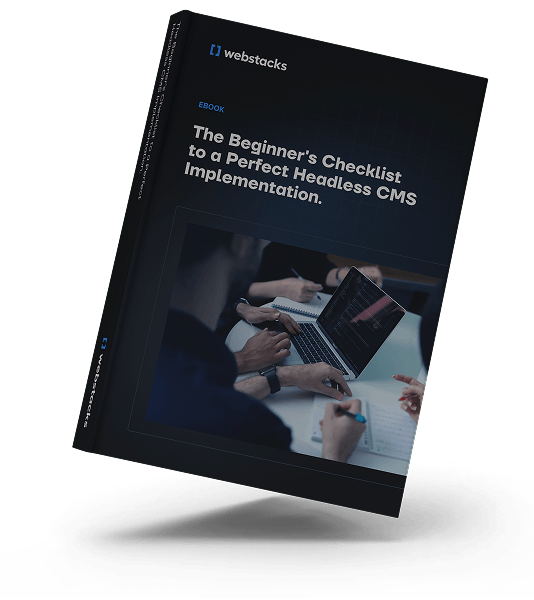As B2B companies scale, whether through product expansion, geographic growth, or acquisitions, their website strategy often starts to show strain. Questions inevitably emerge regarding the foundations of your digital presence:
- Should we centralize everything under a single domain?
- Should we start building out multiple web properties for different products, regions, or customer segments?
This article will explore the advantages and disadvantages of both options, helping you make an informed decision for your business.
Key Takeaways
- Understand the good and bad of a single website vs. multiple websites for your business
- Evaluate factors like business goals, target audience, and budget to determine the best approach
- Discover how a single website or multiple websites can impact your SEO and marketing strategy
- Learn best practices for managing a single website or multiple websites effectively
Understanding the Dilemma: Single Website vs Multiple Websites
Deciding between a single website and multiple websites is an important choice for businesses, each option having its pros and cons. The structure you choose fundamentally shapes how your brand scales, how efficiently your team operates, and how effectively you reach distinct audience segments.
A single website is simple and cost-effective. It creates a consistent brand image and makes it easy for users to find what they need. However, it might not be the best choice if you want to target very different market segments or grow quickly.
On the other hand, multiple websites allow for more segmented marketing and better SEO. This approach works well for businesses with many products or presences in various regions, as it lets you tailor your message to specific audiences. The tradeoff is complexity: more domains mean more maintenance, more content to manage, and greater risk of brand dilution if not governed carefully.
In the end, the right choice depends on your business goals, budget, and marketing strategy. Let's explore the advantages and disadvantages of each option, so that you can make a decision that fits your needs.
Advantages of a Single Website
A single website offers several key benefits for businesses looking to consolidate their online presence and maximize operational efficiency. For companies prioritizing brand consistency and streamlined operations, a single domain can deliver significant advantages in management, cost control, and user experience.
Simplified Management
Managing one website simplifies content updates, site maintenance, and performance tracking. This streamlined approach reduces the time and effort required compared to juggling multiple sites. By centralizing these tasks, businesses can allocate resources more effectively, allowing for quicker responses to market changes and customer needs.
Furthermore, a headless CMS enhances this efficiency by enabling flexible content delivery and easy integration with various platforms, empowering organizations to adapt swiftly and stay ahead in a competitive landscape. The result is a lean operational model where your team can focus on quality over quantity, delivering better content faster without the overhead of managing disparate systems.

Unified Branding
A single site helps create a consistent brand message and look across all digital touchpoints. This can significantly boost brand recognition and customer trust. In fact, 70% of brand marketers say building brand recognition is their top goal.
A unified platform ensures that your brand's voice, visual elements, and core messaging remain consistent, reinforcing your brand identity with every user interaction. Users encounter the same design patterns, navigation structures, and brand language no matter where they enter your site, creating a cohesive experience that builds confidence and reduces cognitive friction.
Lower Costs
Running one website is usually more cost-effective than managing several. You'll spend less on hosting, development, and marketing. This is especially beneficial for businesses with tight budgets or those focused on keeping operations simple and efficient.
The consolidated approach reduces duplicate efforts in content creation, SEO, and maintenance, leading to significant cost savings over time.
By focusing on these advantages, businesses can make the most of a single website approach, creating a strong online presence while keeping management simple and costs down.
This strategy allows companies to concentrate their efforts on delivering high-quality content and user experiences through a single, well-optimized platform.
Disadvantages of a Single Website
While a single website has benefits, it also has some drawbacks that become more pronounced as your business scales and diversifies. The limitations that seem minor at launch can become significant bottlenecks as you add products, enter new markets, or target increasingly distinct audience segments.
Limited Scalability
As your business grows and expands its offerings, a single website may struggle to keep pace. Adding new products, services, or content can become challenging without cluttering the site. This can lead to:
- Difficulty organizing diverse content effectively
- Challenges in accommodating different product lines or service categories
- Potential information overload for visitors
The more you add to a single site, the harder it becomes to maintain clear hierarchies and intuitive pathways, especially when serving multiple buyer personas with different needs and levels of technical sophistication.
Potential Navigation Issues
94% of users consider easy navigation the most important website feature. As a single site grows more complex, it can become harder for users to find what they need. This can result in:
- Cluttered menus and confusing site structure
- Difficulty in creating clear paths for different user groups
- Increased bounce rates as users struggle to locate relevant information
These issues can impact user experience, potentially leading to decreased engagement and conversions. As your business evolves, it's crucial to carefully consider whether a single website can effectively scale to meet your growing needs while maintaining user-friendly navigation.
Advantages of Multiple Websites
While a single website can be an effective online presence for many businesses, opting for multiple websites can also provide significant advantages, particularly for companies with diverse product lines or distinct market segments. The ability to tailor each property to specific audiences can unlock marketing precision and SEO opportunities that a unified site cannot match.
Targeted Marketing
Having multiple websites allows for more targeted marketing efforts. Targeted advertising can increase brand engagement by as much as 80%.
Each site can be tailored to specific products, services, or target audiences, creating a more personalized and engaging experience for customers.
By segmenting your online presence, you can craft messages and experiences that resonate more deeply with each distinct audience. A site designed for enterprise buyers can emphasize security, compliance, and scalability, while a site targeting SMBs can highlight ease of use, quick setup, and cost efficiency.
Enhanced SEO
The use of multiple websites can boost overall SEO performance. Each website can be optimized for its unique set of keywords and content, leading to improved search engine visibility and better rankings across multiple domains.
This approach allows businesses to target a wider range of search queries, potentially attracting more diverse traffic. It's particularly beneficial for companies looking to expand their online reach and attract new customers in different market segments or geographical areas. When executed strategically, multiple sites can dominate search results for both broad category terms and niche long-tail keywords.
Flexibility and Customization
The multiple website approach offers greater flexibility and customization options. Enterprises can easily adapt and scale their online presence as their needs evolve.
This is particularly advantageous for companies with diverse product lines, multiple locations, or distinct customer segments. Separate websites allow for tailored content, design, and user experiences that best suit the specific requirements of each target market or product offering.
This flexibility can lead to improved user engagement and higher conversion rates across different business areas.
By leveraging these advantages, large-scale orgs can create a more dynamic and targeted online presence, potentially leading to increased market reach and improved customer engagement across various segments of their operations.

Disadvantages of Multiple Websites
While multiple websites can offer distinct advantages, they also come with their own set of drawbacks. Navigating the complexities of managing multiple websites can be a significant challenge, particularly for small to medium-sized businesses with limited resources.
Increased Management Complexity
Maintaining multiple websites requires coordinating content, branding, and technical aspects across various platforms. This increased management complexity can be time-consuming and resource-intensive, often requiring dedicated personnel or specialized tools to maintain consistency and quality.
This includes:
- Content Management: Updating and maintaining content across multiple sites can lead to inconsistencies and require more time and effort.
- Technical Maintenance: Each site needs separate security updates, performance optimizations, and troubleshooting.
- SEO Challenges: Dividing SEO efforts across multiple sites can dilute your overall search engine visibility.
- User Experience Coordination: Ensuring a consistent user experience across all sites becomes more challenging as the number of sites increases.
Without strong governance frameworks and clear operational workflows, managing multiple sites can quickly spiral into fragmented responsibilities and inefficient processes.
Higher Costs
The multiple website approach often comes with higher expenses that compound as you add more properties to your portfolio.
These include:
- Multiple domain registrations and hosting fees
- Increased development and design costs for each site
- Higher marketing expenses to promote multiple web properties
- Additional tools and software licenses for managing multiple sites
These additional costs can quickly add up, putting a strain on your budget and potentially reducing the overall return on investment. Before committing to multiple sites, it's essential to project total cost of ownership over time and assess whether the expected revenue gains justify the ongoing investment.
Consistency Challenges
Ensuring a consistent brand identity, messaging, and user experience across multiple websites can be a significant challenge. The more autonomy each site has, the greater the risk of divergence from core brand standards.
Key risks include:
- Brand Dilution: Inconsistencies can confuse or even alienate your customers, undermining efforts to build a strong and cohesive brand presence.
- Content Duplication: There's a risk of creating duplicate content across sites, which can negatively impact SEO.
- Customer Confusion: Users may struggle to understand the relationship between different sites, leading to a poor overall experience.
It's worth noting that 68% of businesses said that brand consistency was a major contributor to revenue growth, highlighting the importance of maintaining a unified brand presence.
Ultimately, while multiple websites can offer advantages in specific scenarios, they also introduce a range of complexities that must be carefully managed. Businesses must weigh the potential benefits against the increased demands on resources and the risks of inconsistent branding and customer experience.
Factors to Consider When Choosing
When deciding between a single website or multiple websites, business owners must carefully evaluate several key factors to determine the most suitable option for their unique needs.
These factors include your business goals and objectives, audience and market segmentation, available budget and resources, as well as your SEO and marketing strategy.
- Business Goals and Objectives: The first step is to align your website structure with your overarching business goals and objectives. Are you aiming for streamlined operations, targeted marketing, or scalability? Understanding your core business priorities will help you identify the website approach that best supports your long-term vision.
- Audience and Market Segmentation: Your target audience and market segmentation should also be a driving factor in your decision. Consider the unique needs and preferences of each customer group you serve. A single website may be sufficient if your audience is relatively homogeneous, but multiple websites could be advantageous if you cater to distinct market segments with varying interests and requirements.
- Budget and Resources: The available budget and resources, including personnel and technical capabilities, play a significant role in determining the feasibility and sustainability of your chosen approach. A single website may be more cost-effective, while multiple websites could require additional investment in development, maintenance, and management.
- SEO and Marketing Strategy: Finally, your business's SEO and marketing strategy must be taken into account as 68% of online experiences begin with a search engine. The website structure can directly impact search engine optimization, content management, and overall digital marketing efforts. Multiple websites may offer more flexibility in targeting specific keywords and product lines, but a single website can provide a more unified branding and marketing approach.
Carefully considering these factors can determine the website structure that is most right for your business and help you achieve your desired results – whether you opt for a single website or multiple websites across your products and services.
Best Practices for Managing Single and Multiple Websites

Content Ecosystems
Whether you have a single website or manage multiple websites, adhering to best practices is crucial for ensuring effective site management and optimization. At the core of this approach are three key elements: a well-crafted content strategy, consistent branding, and the strategic use of technology.
Content Strategy
A content strategy is essential for providing your audience with valuable, engaging, and relevant information and is why 82% of marketers are actively investing in content marketing. Without a strategic approach, content efforts become scattered, inefficient, and difficult to measure.
An effective content strategy involves:
- Keyword Research: Identify relevant keywords and topics that resonate with your target audience and align with your business goals.
- Content Planning: Develop a content calendar to ensure consistent publishing and cover a diverse range of topics.
- Quality Content Creation: Produce high-quality, original content that addresses your audience's needs and interests.
- Content Optimization: Implement SEO best practices to improve visibility in search engine results.
- Content Distribution: Utilize various channels to reach your audience, including social media, email marketing, and guest posting.
Through aligning your content with programmatic SEO and your target audience's needs and interests, you can effectively attract and retain visitors, ultimately driving better search engine rankings and inbound marketing results.
Consistent Branding
Maintaining consistent branding across all your online touchpoints is crucial for building a strong, recognizable visual brand identity. This applies whether you have a single website or multiple sites. Brand consistency builds trust, reduces cognitive load, and makes your business instantly recognizable across channels.
Key aspects include:
- Visual Elements: Use consistent colors, fonts, and imagery across all platforms.
- Messaging: Maintain a consistent tone of voice and key messages in all communications.
- User Experience: Ensure a cohesive user experience across all your digital properties.
- Brand Guidelines: Develop and adhere to comprehensive brand guidelines to maintain consistency.
Consistent branding helps create a memorable and trustworthy brand experience for your audience, fostering loyalty and recognition. This is particularly critical in B2B contexts where buying cycles are long and prospects interact with your brand across multiple touchpoints before converting.
Effective Use of Technology
Strategic use of technology can greatly enhance the management and performance of both single and multiple website setups. The right technology stack reduces manual effort, improves consistency, and provides data-driven insights for continuous improvement.
Key technologies to consider:
- Content Management Systems (CMS): Use a reliable CMS to streamline content creation, publishing, and management.
- SEO Tools: Implement tools for keyword research, rank tracking, and technical SEO audits.
- Analytics Platforms: Use comprehensive analytics tools to gain insights into user behavior, traffic sources, and site performance.
- Security Solutions: Implement security measures to protect your site(s) from threats and vulnerabilities.
- Performance Optimization Tools: Utilize caching, CDNs, and other optimization tools to improve site speed and performance.
Incorporating these best practices into your site running and marketing strategy can effectively build and maintain a strong online presence, regardless of whether you choose a single website or multiple websites to represent your business.
The Decision Between Single vs Multiple Sites
The decision between a single website or multiple websites for your business depends on a careful evaluation of your specific needs, resources, and goals. Neither approach is inherently superior: the right choice depends entirely on your business model, audience segmentation, and operational capacity.
A single website offers simplicity, cost-effectiveness, and unified branding, while multiple websites provide opportunities for targeted marketing, enhanced SEO, and greater flexibility. The key is matching your website architecture to your growth strategy and ensuring your team has the resources to execute and maintain whichever approach you choose.
Here at Webstacks, we help many leaders in tech level up their online presence through next-gen solutions for B2B websites. Join our growing community of B2B experts and learn the ins and outs of building a website through our headless CMS implementation checklist.
Call Webstacks to learn more about Headless CMS B2B web strategy and discuss whether a singular or multiple websites is the best route.




